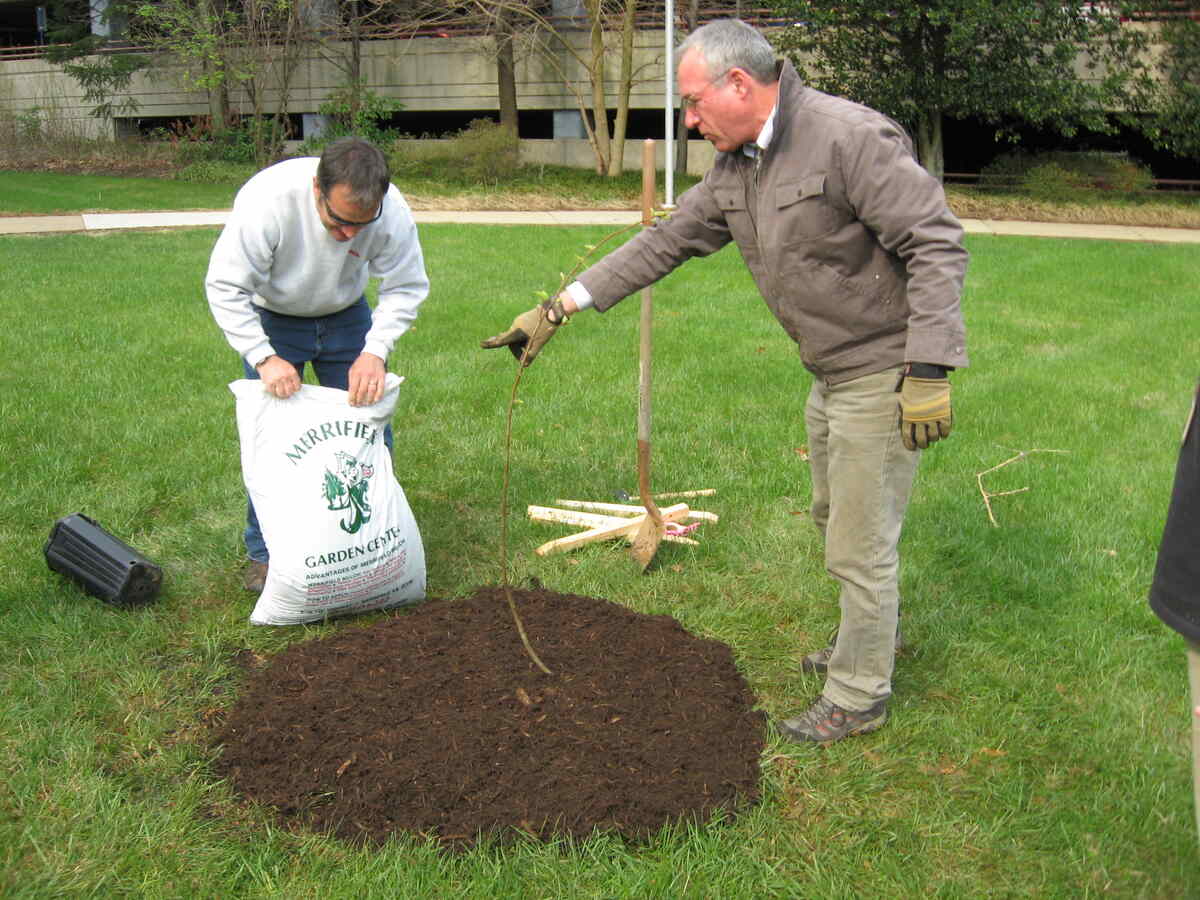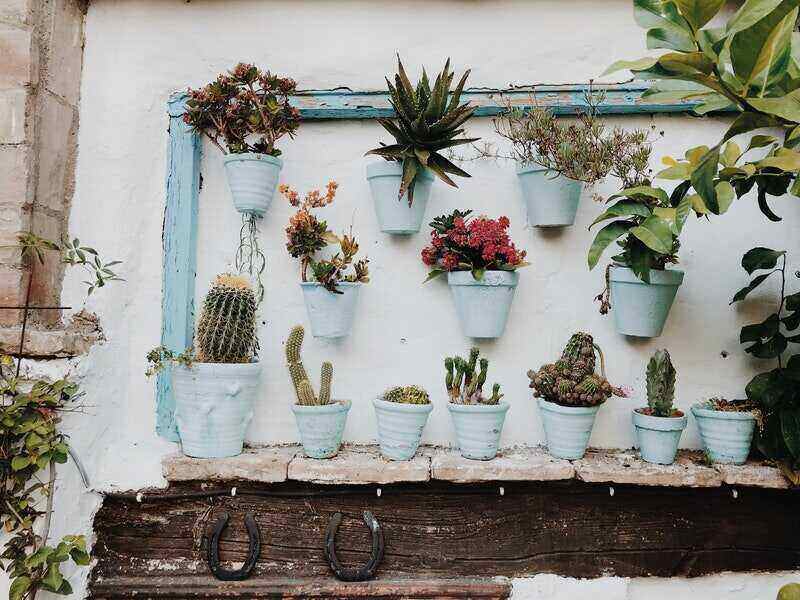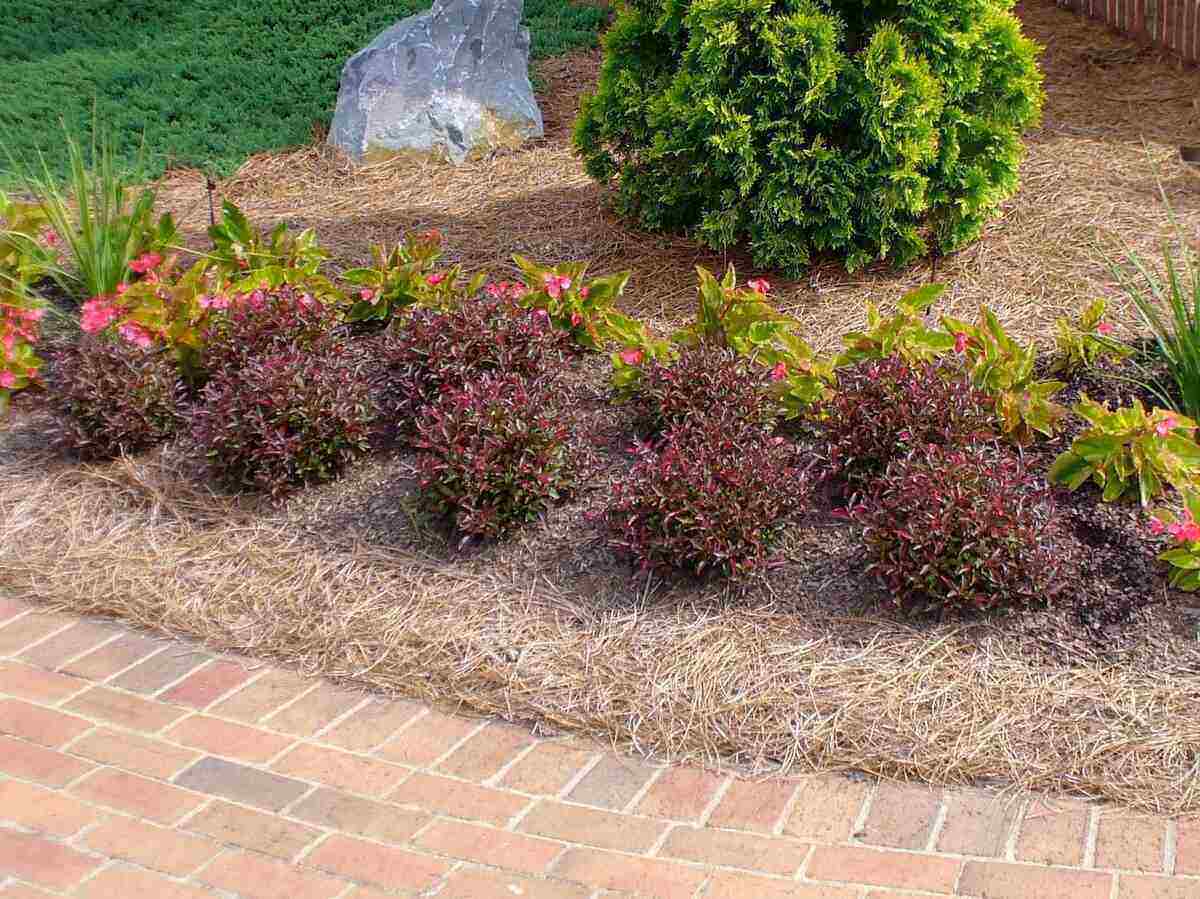
When looking for a way to keep your garden beds weed-free, most sources will point you towards landscape fabric (aka landscape cloth). They aren’t exactly wrong, per se … but they aren’t exactly right either. We’ll show you the nine best alternatives to using landscape fabric.
Landscape Fabric: Yes or No?
As a weed barrier, landscape fabric is hit-or-miss. It can smother weeds that grow in the ground, but new weed seeds can easily take root in the mulch on top of the cloth.
Plus, landscape fabric is usually made of woven polypropylene. As you can tell, it isn’t natural based on how many syllables there are in the name. This type of landscaping fabric isn’t biodegradable, it won’t add nutrients to your soil and can even interrupt your soil’s natural biological processes.
So, what can you use for weed control instead? Here are nine easy and affordable alternatives to landscape fabric and the pros and cons of each.
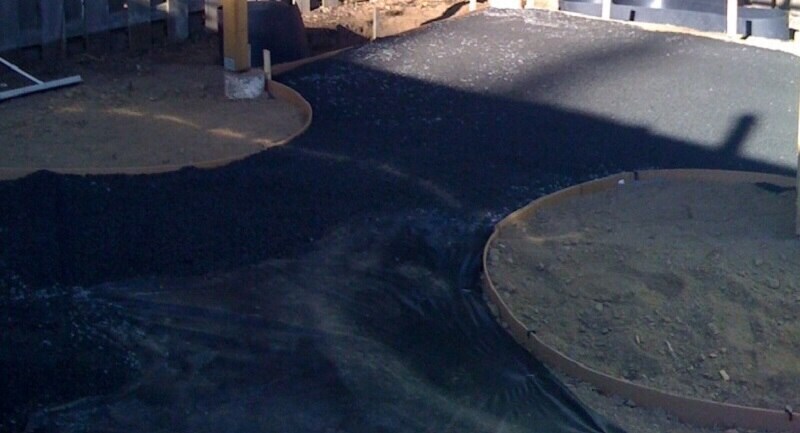
Though popular with amateurs and professionals alike, landscape fabric isn’t the healthiest choice for your garden.
Photo Credit: Steve Burt / Flickr / CC BY-SA 2.0
9 Landscape Fabric Alternatives
1. Cardboard
Your first alternative weed barrier is something you probably have loads of laying around your house. Every time you make an online purchase, you get a cardboard box! They are usable as a plant-friendly, biodegradable landscape fabric alternative.
The idea of cardboard as a method of weed control comes from the concept of sheet mulching.
When using cardboard as landscaping fabric, remove all staples, tape, and any inorganic material attached to your cardboard. You don’t want all that extra junk polluting your garden.
Make sure to overlap the pieces by a few inches at every seam, so weeds don’t have any space to break through. Wet the cardboard to make it more pliable to fit it into the spaces between your plants.
Once you’re happy with your cardboard weed barrier, mulch it. A layer of organic mulch like wood chips or bark is best and improves the aesthetics of your garden.
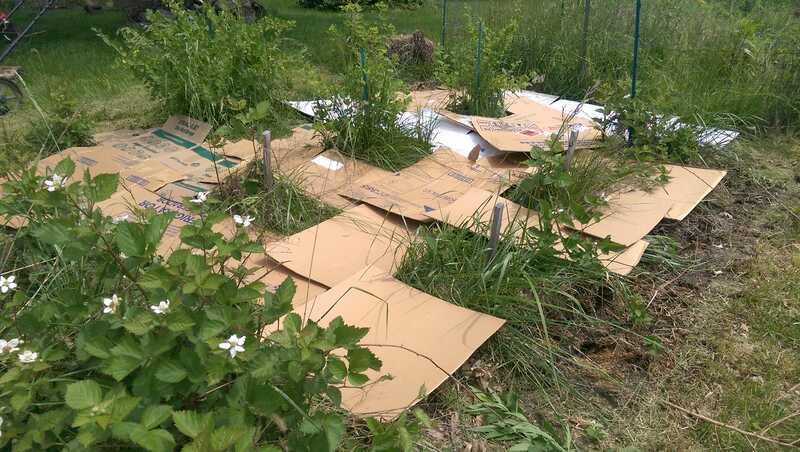
Pros of using cardboard
- It’s biodegradable and earthworms like it, so it won’t hurt your soil. Instead, it will add nutrients as it breaks down.
- It’s super cheap or even free if you already have a supply of cardboard boxes.
Cons of using cardboard
- It doesn’t pair well with inorganic mulch like gravel or rubber. As the cardboard decomposes, inorganic mulch will stay intact and sink into the soil, turning your garden bed into a mess.
- Cardboard can become a food source for termites.
Where to use cardboard: Wherever weeds are giving you trouble. Lay down two layers of standard cardboard, or one layer if you’re working with the heavy-duty extra thick type.
2. Newspaper
You may be like many people and get your news online now, but newspapers are still good for something. You can use newsprint as another cheap, biodegradable weed barrier for your garden.
Installing newspaper in your garden as a landscape alternative is similar to placing cardboard in your garden area. The difference:
- Newsprint is thin. You will need 4-8 layers of newspaper to effectively stop weeds.
- Shredded newspaper will let more moisture and sunlight reach your plant’s roots. Even under a layer of mulch, shredded newspaper tends to get loose and blow away.
Make sure you don’t use glossy, colored newspapers, like magazines, in your landscape. This type of paper won’t break down.
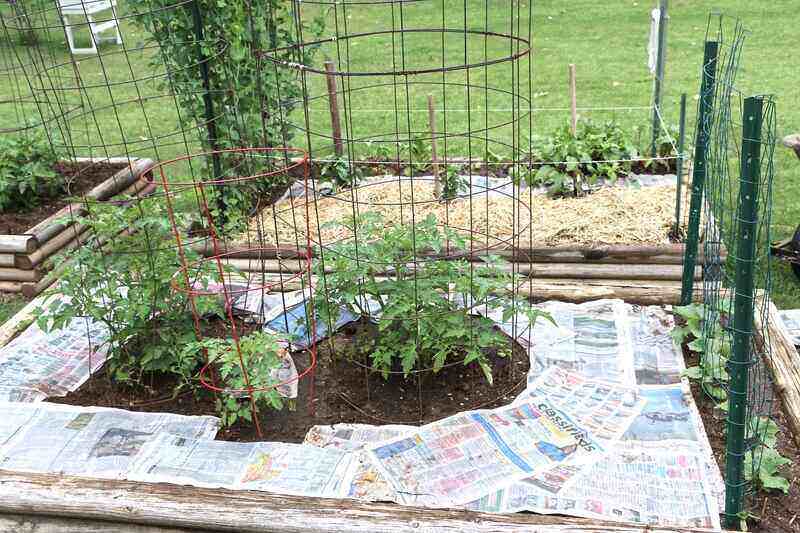
Photo Credit: OakleyOriginals / Flickr / CC BY 2.0
Pros of using newspaper
- It’s biodegradable and good for your soil. Newspaper makes great food for earthworms, which your garden needs.
- Like cardboard, newspaper is cheap or free.
Cons of using newspaper
- Because it’s biodegradable, newspapers won’t work with inorganic mulches. Stick with organic mulch like fallen leaves or grass trimmings, which will decompose along with the newspaper.
- Newspaper won’t last as long as cardboard, and you’ll have to replace it regularly.
Where to use newspaper: Newspapers work well around flowers, trees, shrubs, and vegetable gardens, but they are usable anywhere you have a problem.
3. Burlap
Of all the alternative options we’ve compiled, burlap is the most similar to traditional landscape fabric. You install it essentially the same way, by laying it in sheets with holes or slits cut out for your plants and then using pins to hold it down.
Burlap also functions similarly to landscape cloth because it suppresses weeds but is permeable enough to let the water reach the soil. Use natural burlap made of organic material, so it will eventually break down and won’t hurt earthworms.
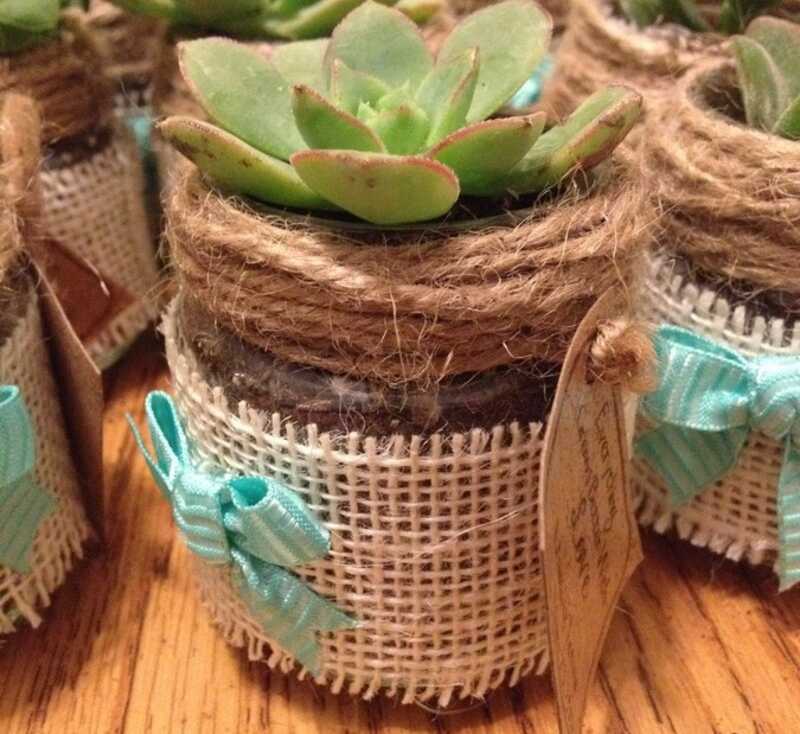
Pros of using burlap
- It’s the closest thing you’ll find to natural landscape fabric.
- Burlap is biodegradable and beneficial for your plants and soil.
Cons of using burlap
- For most people, burlap won’t be as cheap or easy to find as cardboard or newspaper. It’s still significantly cheaper than most traditional landscaping fabrics.
- Like other biodegradable alternatives, it’s not good for garden beds with inorganic mulch like rubber mulch or pea gravel.
Where to use burlap: You can use burlap safely around your garden plants, bushes, and trees.
4. Ground cover plants
Ground cover plants block sunlight before it can reach weed seeds that want to sprout in your garden. Essentially, these plants choke out the weeds without interfering with the other plants, shrubs, and flowers in your garden bed.
Aside from their function as a weed barrier, ground cover plants also add an extra aesthetic element to your garden. Even better news: Most ground cover plants are low-maintenance and thrive in almost any climate.
Some of the best evergreen ground cover plants for preventing weeds include creeping juniper (Juniperus horizontalis), ajuga (Ajuga reptans), and mondo grass (Ophiopogon japonicus).
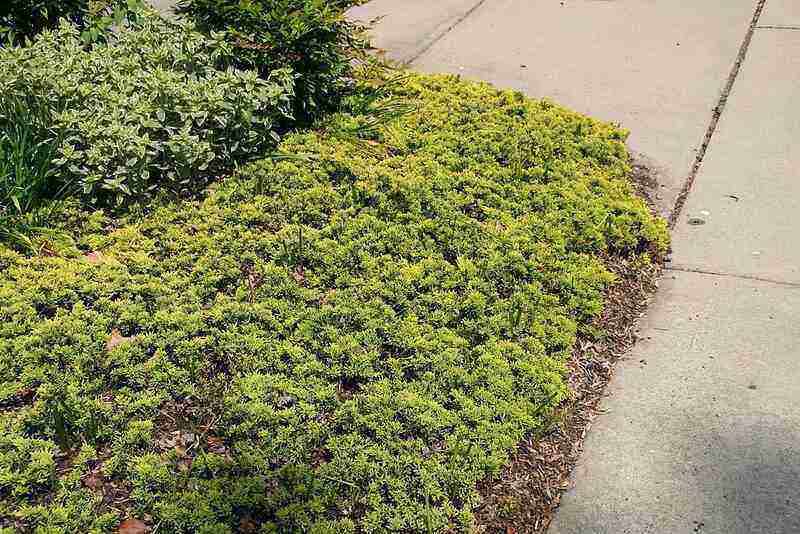
Creeping juniper is one of the best ground cover plants to use as a weed barrier.
Photo Credit: David J. Stang / Wikimedia Commons / CC BY-SA 4.0
Pros of using ground cover plants
- This is the most natural way to control weeds.
- Ground cover plants are a more long-term solution for weed control than landscape fabric or any other alternatives listed here. You won’t have to replace the ground cover as long as you choose an evergreen variety and keep it alive.
Cons of using ground cover plants
- Depending on what species you choose, this option can get expensive if you need to cover a large area.
- Even though most ground covers are low-maintenance, you’re still adding another plant to your garden that you’ll have to take care of.
Where to use ground cover plants: They easily fill in neglected, difficult-to-grow areas, such as confined places, spaces between stepping stones, slopes, or shady areas.
5. Straw
Wheat straw in the garden is an excellent method for improving soil health by adding organic material while preventing weed growth. Straw prevents most weeds from sprouting by blocking out the sun.
Some straw mulches have hay mixed in, which can add weed seeds in your vegetable rows. Use a guaranteed weed-free straw. It’s compacted, so depending on the size, one bale can cover a depth of 2-4 inches up to 80 square feet. If you purchase straw at a garden center, it will usually have the square feet covered on the package.
Hay and straw are not the same. Hay is a type of grass that is primarily grown and harvested for cattle. Straw is the dry, hollow stalk left behind after the wheat or barley harvest.
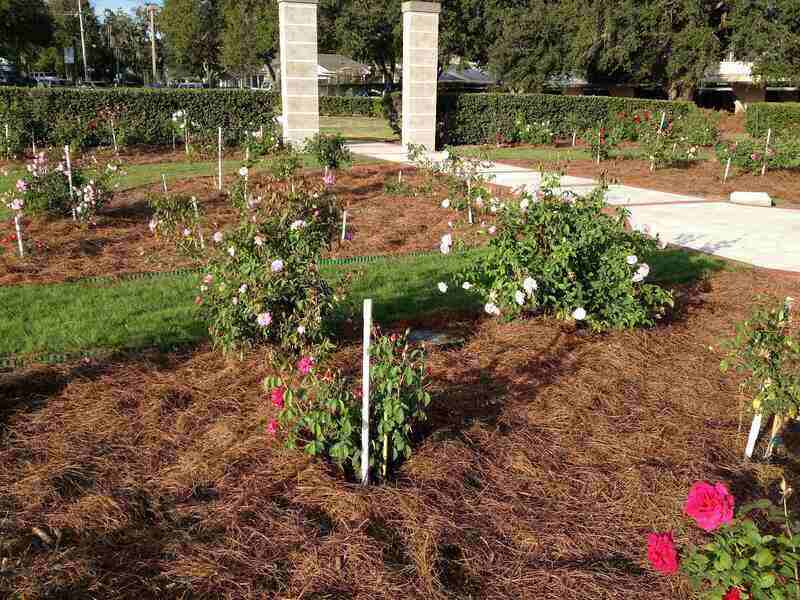
Pros of using wheat straw
- As it decomposes, nutrients enter the soil, benefiting both your plants and the worms.
- It helps to keep topsoil in place and prevents erosion, is lightweight, and is easy to use.
Cons of using wheat straw
- A hay/straw mix is often cheaper but may increase the number of weeds you already have.
- Because straw breaks down rapidly into the soil, it may not hold its beautiful golden hue for as long as wood chips and will need a fresh application every year.
Where to use wheat straw: Straw is best used in vegetable gardens. Due to the risk of spreading fungus to your garden crops, keep the straw away from the leaves and stems of your plants.
6. Wood Chips
As an organic mulch, wood chips decompose slowly and provide the soil with nutrients. Wood chips help keep moisture in and soil temperatures optimal. They help prevent plant diseases and pest infestations.
Wood chips are available at most garden centers, or your local tree care service may have options. Avoid using wood from previous construction work. It may contain more pollutants than the landscaping fabric.
Wood mulch is becoming widely acknowledged as a key component of environmentally friendly gardens. This mulch is a popular alternative to landscaping fabric.
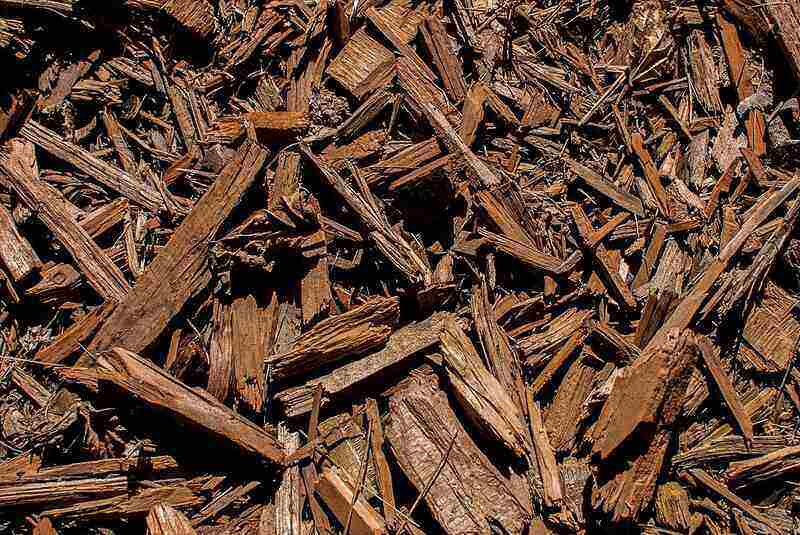
Pros of using wood chips
- They help your soil by supplying nutrients, holding onto moisture, regulating soil temperature, and guarding against compaction and erosion.
- Wood chips are an economical solution to boost your garden’s ecosystem, remove toxins, and control infections and pests.
Cons of using wood chips
- While they don’t attract termites, wood mulch does offer a perfect habitat for any termites that may already be there or stumble onto the mulch while foraging.
- Wood chips will compact over time. If you choose the colored type, it will look nice for a while, but the hues fade, becoming less attractive.
Where to use wood chips: Around your trees and shrubs, spread a 2-inch to 3-inch blanket of wood chips to prevent weeds. Do not put mulch directly against the trunks of your trees or shrubs, as this may invite pests. Wood chips aren’t a good choice for your vegetable and flower beds.
7. Bark Mulch
Bark mulch, like wood chips, retains moisture, regulates temperature, improves the soil with nutrients, and controls weeds. This mulch has become a popular alternative to landscaping fabric and has an average cost of $72 per cubic yard. You’ll find bark mulch at your local hardware store or garden center.
Which size bark is best? The University of Georgia Extension recommends smaller bark bits over bigger chunks. A note of caution: Do not use much made from old construction projects as it may contain pollutants.
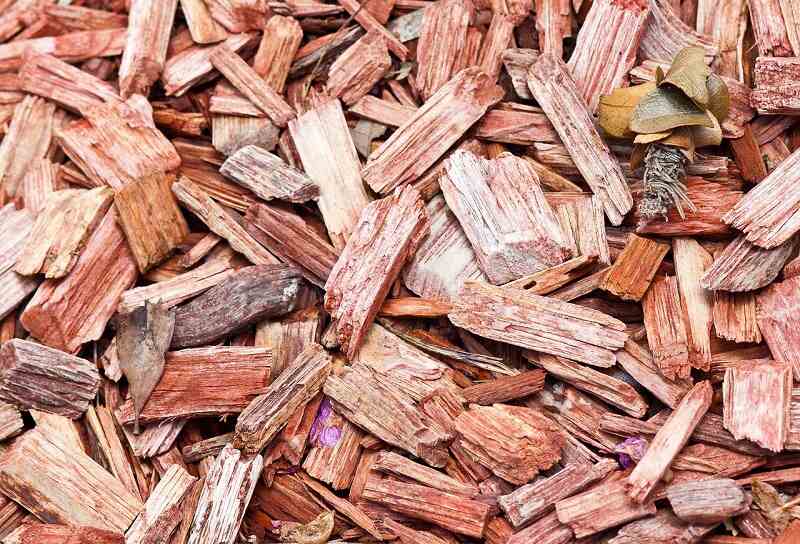
Pros of using bark mulch
- Your soil benefits by receiving nutrients, retaining moisture, controlling soil temperature, and preventing erosion.
- Easy to use and cheap, bark mulch tilled into heavy clay soils will improve drainage and stay put on slopes.
Cons of using bark mulch
- This mulch occasionally contains dye, which is terrible for the soil’s microorganisms. For your garden, get undyed or brown mulch.
- Mulch is an excellent hiding spot for pests like slugs and snails, and using too much mulch can suffocate your plants.
Where to use bark mulch: It is excellent for vegetable gardens. Apply a nitrogen fertilizer before laying the mulch. Use it around trees, shrubs, and flower beds, too.
8. Pine Needles and Other Lawn Waste
Pine needles, grass clippings, and shredded leaves are free alternatives to landscape fabric. They’re also environmentally friendly and easy to spread in your garden and flower beds.
Pine needles, mulched leaves, and recycled grass clippings prevent soil erosion, hold onto moisture, and enrich the soil with nitrogen. The catch-bag attachment on a lawnmower makes it quick and simple to shred and gather the leaves and grass clippings. If you’re in an area with pine trees, grab your fill.
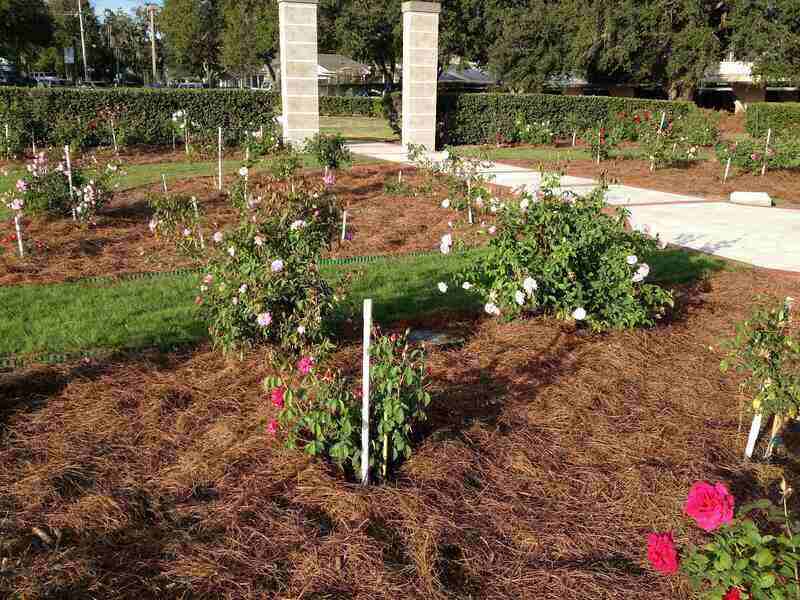
Pros of using lawn waste
- Cheap and easy to come by; everything you need is already in your yard!
- Brown materials, such as fallen leaves and pine needles, have a high carbon content, whereas green materials, such as grass clippings and weeds, have a high nitrogen content.
Cons of using lawn waste
- Wet grass clippings or shredded leaves might mat down, preventing oxygen and moisture from reaching the soil. Only use dry clippings and no more than 2 inches in a garden.
- Because pine needles are flammable, they may not be a suitable landscape fabric replacement if you reside in a forest fire-prone region.
Where to use lawn waste: Grass clippings and leaves degrade quickly making them ideal for vegetable and flower beds. Use pine needles like any other organic mulch and apply where needed.
Pro Tip: Many cities have free mulch programs that provide various kinds of clean, high-quality mulch to local citizens.
9. Herbicides
If you don’t like the idea of using landscape cloth or any of these alternatives, you can prevent and kill weeds with herbicides. You have tons of chemical-based and natural weed-killer options.
Pre-emergent weed control products (such as Preen) will keep weeds from germinating and growing in the first place. As long as your other plants have already germinated and reached about 2 to 3 inches in height, pre-emergent weed control products shouldn’t hurt them.
If you already have a weed problem that you need to squash, then post-emergent weed killers (commercial sprays, vinegar, etc.) are your best bet.
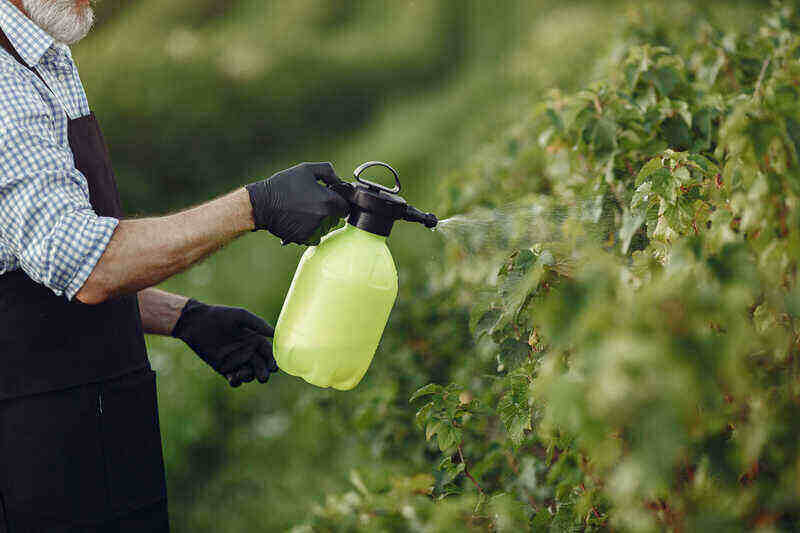
Pros of using herbicides
- You can use any kind of mulch in your garden you want, including pea gravel, river rocks, rubber, and other inorganic materials. (Remember your options are more limited if you use a biodegradable weed fabric like burlap or cardboard.)
- Generally speaking, herbicides are the most effective method for keeping your ornamental beds weed-free.
Cons of using herbicides
- Some weed control products can be bad for the environment and cause damage to your plants.
- Using herbicides will require more work on your part, as you’ll have to reapply them every few months to keep the weeds at bay.
Where to use herbicides: Use herbicides in rock gardens, ornamental beds, and even in the lawn before or after weeds sprout. If you choose a non-selective herbicide, spray carefully. These herbicides kill any vegetation they contact.
FAQ About Landscape Fabric Alternatives
It’s not recommended to use plastic as a weed barrier in the landscape. The clear or black plastic used in landscaping has the same drawbacks as landscape fabric. It can be bad for your soil and plants, plus weeds can sometimes grow on top of it.
In some ways, plastic is even worse because it isn’t permeable, which means it doesn’t let water reach the soil. It also can cause standing water in your garden, which can rot and kill your plants.
Yes. Landscape fabric is necessary under most gravel hardscapes to prevent the stones from shifting or sinking into the soil. Gravel, pavers, natural stone, and brick are excellent for garden paths and walkways.
Probably not. According to the Texas A&M AgriLife Extension, wood chips spreading disease to your trees is very unlikely. Avoid pushing any mulch against the trunk of your trees to avoid other problems like pests.
When to Call a Landscaping Professional
Hiring a professional landscaper takes the work out of weed control for you. Whatever kind of weed barrier you choose, they can install it. They can even design and install the whole plant bed if you want.
With their trained eye for landscape design, pros can make your garden look better all around, not just by keeping it weed-free.
If you want to protect your precious plants from weeds, think beyond the basics. Your soil will benefit from one of these alternatives to landscape fabric.
Main Image Credit: Meganesia / Wikimedia Commons / CC BY-SA 4.0
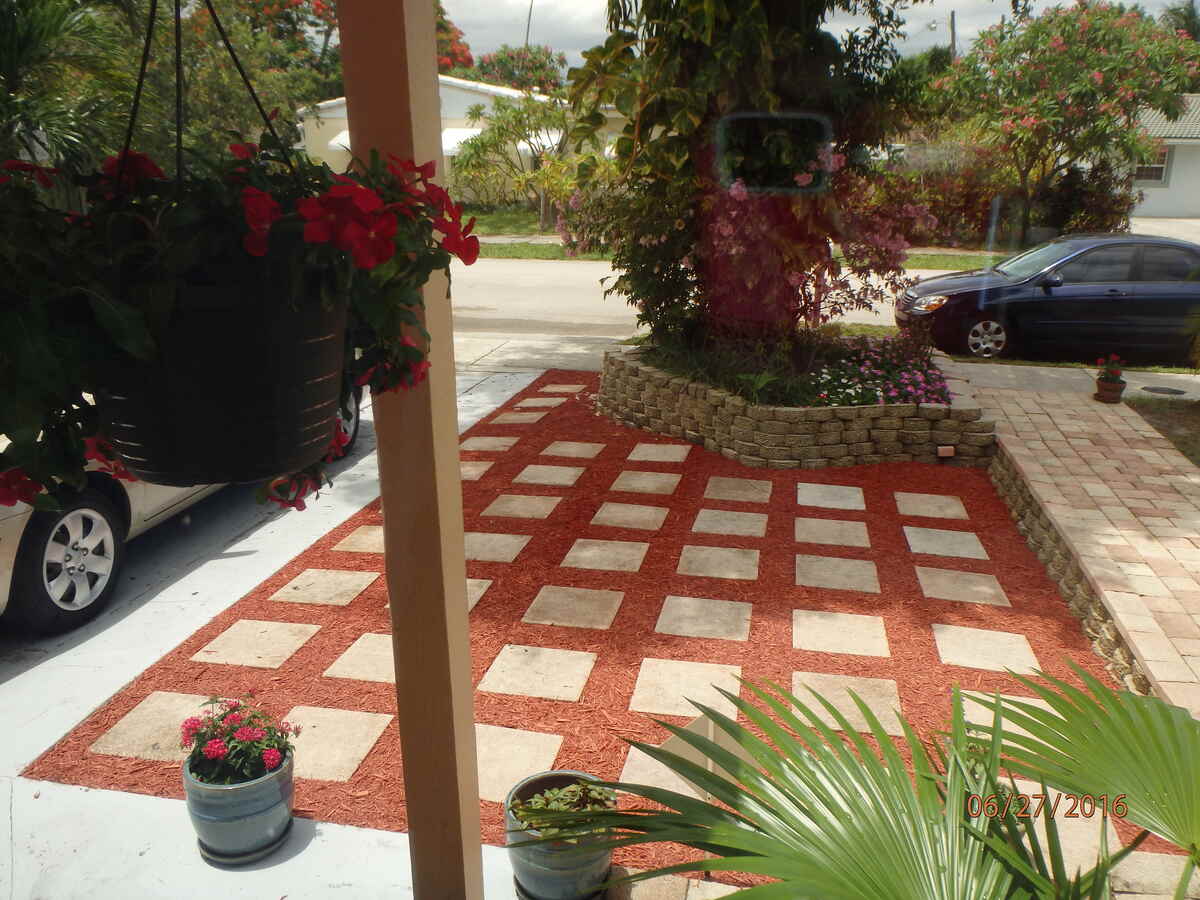
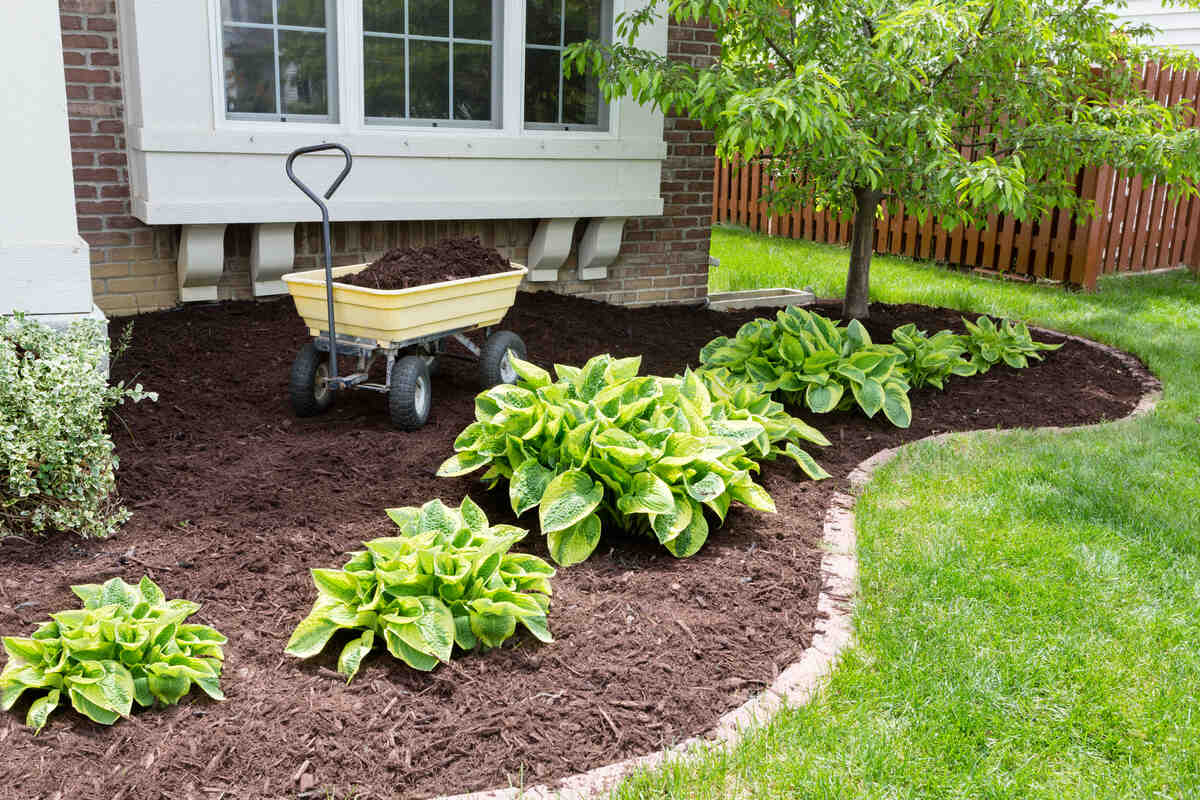
![Landscape Fabric Types and How to Use Them [Guide] there plants with landscape fabric beneath](https://www.lawnstarter.com/blog/wp-content/uploads/2020/10/5778384155_5c5f13a470_k-1-e1616263637434.jpg)
